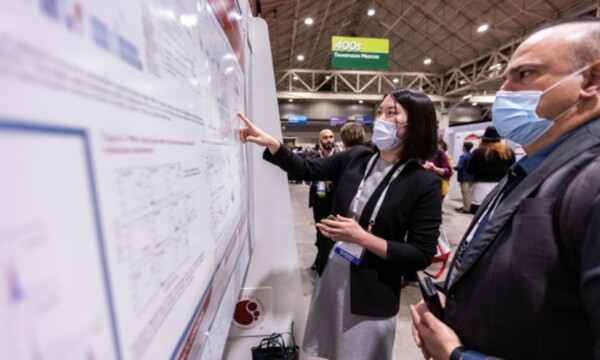Additional early clinical data of CS5001, an anti-ROR1 antibody-drug conjugate (ADC) jointly developed by Korean biotech firms ABL Bio and LigaChem Biosciences, will be presented at the American Society of Hematology (ASH) 2024 Annual Meeting.
This year's ASH will be held from Dec. 7 to 10 in San Diego, California. Interim results from the global phase 1a clinical trial of CS5001 (ABL202, as called by ABL Bio, and LCB71, as called by LigaChem Biosciences) will be presented.

CS5001 is an anti-ROR1 ADC co-developed by ABL Bio and LigaChem Biosciences. Hong Kong-listed CStone Pharmaceuticals holds development and commercialization rights. The company is conducting a global phase 1 trial in China and Australia.
CS5001 will be presented in poster format, titled “Safety and Efficacy in Patients with Advanced Lymphomas from a Global Phase 1a/1b, First-in-Human Study of CS5001, a Novel Anti-ROR1 ADC,” according to an abstract pre-published on the ASH website.
The study was designed to evaluate the safety, pharmacokinetics (PK), and anticancer activity of CS5001 in patients with advanced lymphoma and solid tumors. It comprises a phase 1a (dose escalation) and a phase 1b (dose expansion). CS5001 was administered intravenously at three-week intervals, with dose escalation starting at 7 µg/kg and progressively increasing to 195 µg/kg. Dose-limiting toxicities (DLTs) were assessed at each dose level.
Patients were diagnosed with Hodgkin's lymphoma (HL) or B-cell non-Hodgkin's lymphoma (B-cell NHL) with an ECOG performance status of 0 to 1. They had failed at least two prior therapies. Lymphoma patients were eligible to participate regardless of whether they expressed ROR1 (Receptor-tyrosine kinase-like Orphan Receptor 1). The primary objectives of phase 1a were to confirm safety and tolerability and to establish the maximum tolerated dose (MTD) and recommended phase 2 dose (RP2D).
As of July 2, 2024, 23 patients with advanced lymphoma (11 with Hodgkin's lymphoma and 12 with B-cell non-Hodgkin's lymphoma) had received doses ranging from 33.5 µg/kg to 156 µg/kg. Of these patients, 18 (78.3 percent) have discontinued treatment, and 5 (21.7 percent) continue treatment. The median age of patients in the study was 50 years (31-81 years), and 19 (82.6 percent) were Asian. Eighteen patients (78.3 percent) had an ECOG performance status of 1, and the majority (19, 82.6 percent) had received three or more prior lines of therapy.
Regarding safety, no DLTs were observed, and the MTD was not reached. Treatment-related adverse events (TRAEs) occurred in 20 patients (87.0 percent), with the most common being anemia (nine patients, 39.1 percent), decreased white blood cell count (six patients, 26.1 percent), decreased appetite (six patients, 26.1 percent), and increased AST levels (five patients, 21.7 percent). Grade 3 or higher adverse events occurred in 11 patients (47.8 percent), with fatigue (three, 13.0 percent), increased GGT (three, 13.0 percent), and pneumonia (three, 13.0 percent) being the most common.
Regarding anticancer activity, CS5001 demonstrated an objective response rate (ORR) of 43.5 percent in patients with Hodgkin's lymphoma and B-cell non-Hodgkin's lymphoma.
In Hodgkin's lymphoma, two of 10 evaluable patients at doses of 50 µg/kg or higher achieved complete remission (CR), and four achieved partial remission (PR), resulting in an ORR of 60 percent. In the B-cell non-Hodgkin's lymphoma arm, two of eight evaluable patients at doses of 100 µg/kg or higher achieved CR (one DLBCL and one MCL), and two achieved PR for an ORR of 50 percent.
“CS5001 was well tolerated and showed promising efficacy in patients with advanced lymphoma. The current data support further evaluation in the RP2D setting and a phase 1b dose expansion,” researchers said.
Related articles
- Hematology society urges retention of insurance coverage for expensive CAR-T treatments
- ABL Bio’s anticancer drug candidate emerges as US partner’s core pipeline
- CStone challenges Merck’s ROR1-ADC with new candidate in DLBCL and solid tumors
- ABL Bio expands ABL103 trial, adding Keytruda and chemo in solid tumors
- Long-term management needed for mantle cell lymphoma amid limited treatment options

